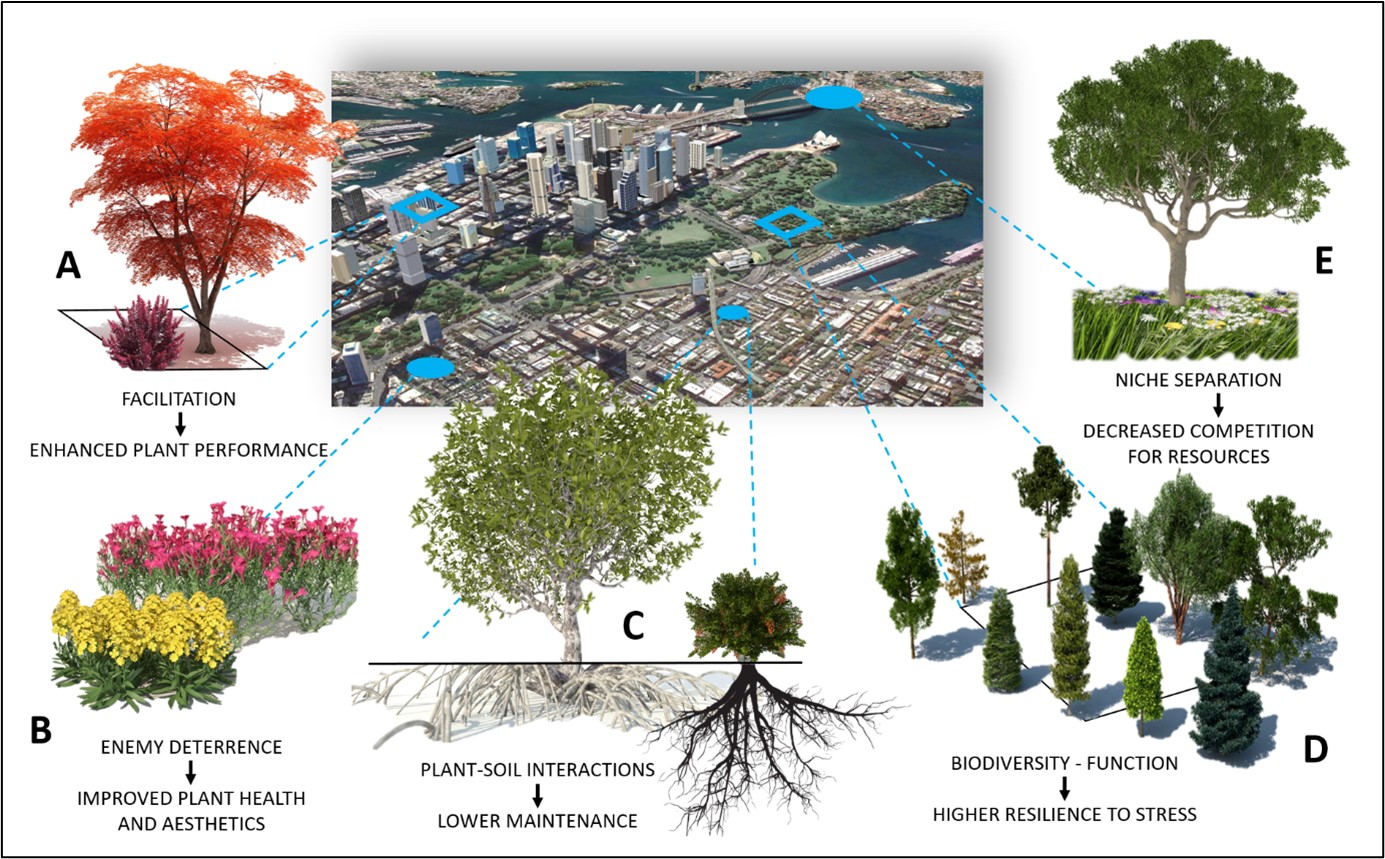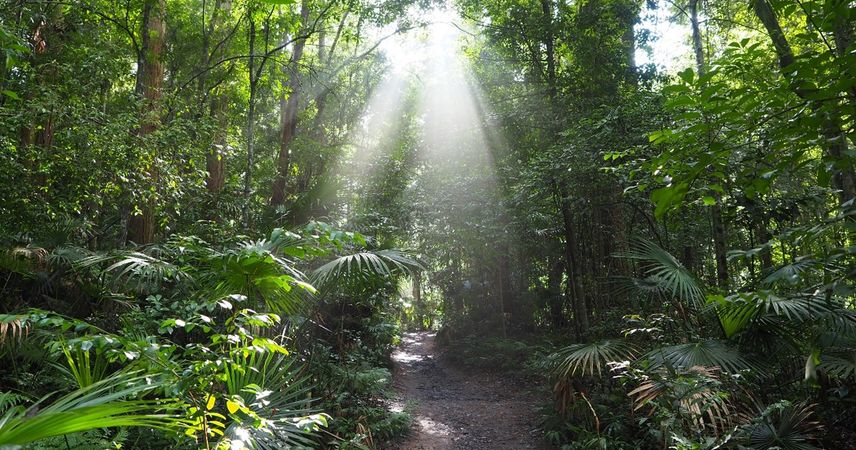An intact bit of Australian bush (credit: Joshua Griffiths)
Authors: Samiya Tabassum and Michelle Leishman, 23 Sept 2021
Have you ever thought about engineering your garden to avoid maintenance? Forget about using robots and gadgets, the answer is actually a lot simpler and easier than you think.
Scientists have long known that in nature, plants form natural assemblages based on positive (and negative) ecological interactions, with species surviving and thriving based on the net result of these interactions. Think back to the last time you went bush walking, all the plants you see in front of you are there because they receive support from other plants, or in some cases, hinder the growth of others. Plants in an urban setting, on the other hand, are there because humans chose them based on things such as aesthetics and suitability, often with little thought into how these plants might interact with each other at a group or ‘assemblage’ level. By incorporating knowledge about how plants naturally grow and interact with each other in nature, we can reduce common maintenance issues, increase diversity and improve plant performance and resilience to future climate extremes.
Here are some examples of how to utilise the power of nature to do the work for you.
Perfect plant pairings
Facilitation is the interaction between two plants in which one plant experiences increased growth and survival without negatively affecting the other. In nature, facilitation is common in arid environments in which tree canopy cover often provides relief from heat stress and low water availability for species growing underneath. In urban settings, however, trees are often used to provide shade and reduce air and soil surface temperature but this has not been directly related to the benefit they could provide to understorey plants. So if you want to plant a shade tolerant species, think about pairing it with a tree species that can provide shade. This will not only increase the survival of your shade tolerant species, but also increase diversity in your green space (Fig. 1).
Understanding competition
Plant species which are very similar in form and resource use will compete strongly with each other, either resulting in neither of them thriving or one of them thriving at the expense of the other. If species can capture resources differently to each other, then they are more likely to be able to grow and thrive together. For example, competition for light in urban green spaces can be reduced by structuring plants into distinct layers, with shade intolerant species in the upper layers and shade tolerant species at the ground level (Fig. 1). The power of competition can also be harnessed to suppress weeds by growing ground covers to monopolise the available light, water and nutrients that otherwise may allow weeds to thrive.
Nature’s insect repellent
Plants have evolved a range of ways to attract and/or deter natural enemies through chemical means such as volatile organic compounds (VOCs). Natural enemies such as insects often find their favourite plants by the way they smell. To fight this, plants release VOCs to throw them off the scent. One way to harness the power of VOCs to keep insect enemies away is to plant a diversity of species in a green space (Fig. 1). Greater species diversity means a more complex odour profile, making it more difficult for enemies to sniff out their favourite plants.
Enrich your soil
Plants need a healthy soil system to survive and thrive, as healthy soils improve access to essential water and nutrients. However, the soil in urban environments can be challenging for plants to grow in because of stresses such as contamination, compaction and low nutrient availability. In the wild, however, plants have evolved symbiotic relationships with mycorrhizal fungi which help plants obtain water and nutrients, and so the presence of mycorrhizal fungi in urban soils may help plants to thrive in urban locations (Fig. 1). For more information on how soil additives can improve the health of your plants, read the blog article ‘What is the deal with soil additives?’
Diversity is the key
Natural ecosystems with a high diversity of species have been found to be more resilient and ‘bounce back’ faster after stressful events such as droughts (Fig. 1). This is because a diverse set of plants is more likely to contain species which have different mechanisms to cope with stresses (e.g. please refer to the blog article ‘Drought tolerators vs drought avoiders’). Some of these species may be knocked out by a particular stress but others are likely to survive and do well. It is therefore important to have diversity in mind when designing urban green spaces as diversity can provide a safety net when things go south.

Fig 1 Examples of ecological mechanisms that can be leveraged when designing biodiverse plantings in an urban area and their potential relationships with benefits for urban landscapes. (A) Herb and shrub species might be facilitated by planting shade trees above them to provide protection from direct sunlight, UV leaf damage and soil dry-wet cycles. Multispecies plant assemblages can in turn provide greater ecosystem services to cities, such as stormwater canopy interception and soil health improvement. (B) Species can be selected based on their odour profiles to deter pest insects and nuisance wildlife, as well as improving aesthetics. (C) By coupling plants able to form associations with mycorrhizae and rhizobia with plants not having this ability, plant-soil interactions can be leveraged to increase plant vigour, availability of soil resources and lower maintenance. (D) More biodiverse communities are thought to have greater ecological functioning and greater resilience to environmental stresses such as extreme heat and prolonged drought. (E) A diverse palette of species with little or no overlapping ecological niches can be selected to ensure an optimal allocation of resources, such as water and nutrients, and decreased competition. Adapted from Tabassum et al., 2020.
REFERENCES
Tabassum, S., Ossola, A., Manea, A., Cinantya, A., Fernandez-Winzer, L., Leishman, M.R., 2020. Using ecological knowledge for landscaping with plants in cities. Ecological Engineering, 158, 106049. https://doi.org/10.1016/j.ecoleng.2020.106049.

